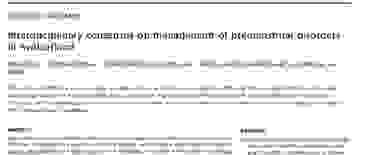
Interdisciplinary consensus on management of premenstrual disorders in Switzerland – a position statement
Premenstrual disorders (PMD) can affect women throughout their entire reproductive years.
March 16, 2017
In order to facilitate and improve the management of women suffering from premenstrual syndrome/ premenstrual dysphoric disorder (PMS/PMDD) in Switzerland, an interdisciplinary expert meeting of general gynecologists, gynecological endocrinologists, psychiatrists, psychologists and specialists in phytotherapy was held in April 2016 aiming to provide an algorithm on PMS/PMDD management taking reproductive stages into account. The experts participating in the meeting were Prof. Dr. Petra Stute, Dr. Christine Bodmer, Dr. Roger Eltbogen, PD Dr. Isabelle Streuli, Prof. Dr. Michael von Wolff, Prof. Dr. rer. nat. Ulrike Ehlert and Dr. Ankica Ging. The outcome of the expert meeting was published as position statement in March 2017 in the Journal Gynecological Endocrinology (Stute et al. 2017).
The Swiss PMD algorithm differentiates between primary and secondary PMD care providers incorporating different levels of diagnostic and treatment. Treatment options include cognitive behavioral therapy, alternative therapy, antidepressants, ovulation suppression and diuretics. Treatment choice depends on prevalent PMD symptoms, (reproductive) age, family planning, cardiovascular risk factors, comorbidities, co-medication and the woman’s preference.
In Switzerland, only chasteberry (Vitex agnus-castus L.) and progesterone are approved for PMD treatment. “The strongest evidence for efficacy of alternative treatments for PMD exists for calcium, chasteberry (Vitex agnus-castus L.) and cognitive-behaviour therapy.
A systematic review found chasteberry extracts to be superior to placebo, pyridoxine and magnesium oxide in women with PMS. In women with PMDD, one study reported chasteberry to be equivalent to fluoxetine. Vitex agnus-castus was effective in reducing both, somatic and mental symptoms. The overall response of PMD patients to Vitex agnus-castus L. ranged between 52–81%. A treatment period of at least 3 month is recommended.”
The position statement is published open access. Please review or download full reference:
Topics
Filter blog posts by topic by clicking on the tags.





